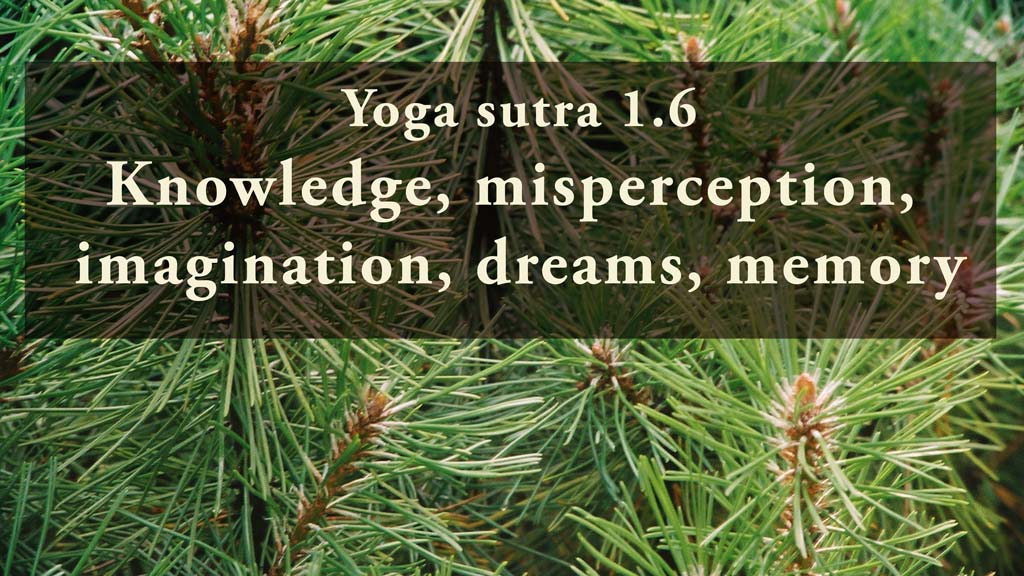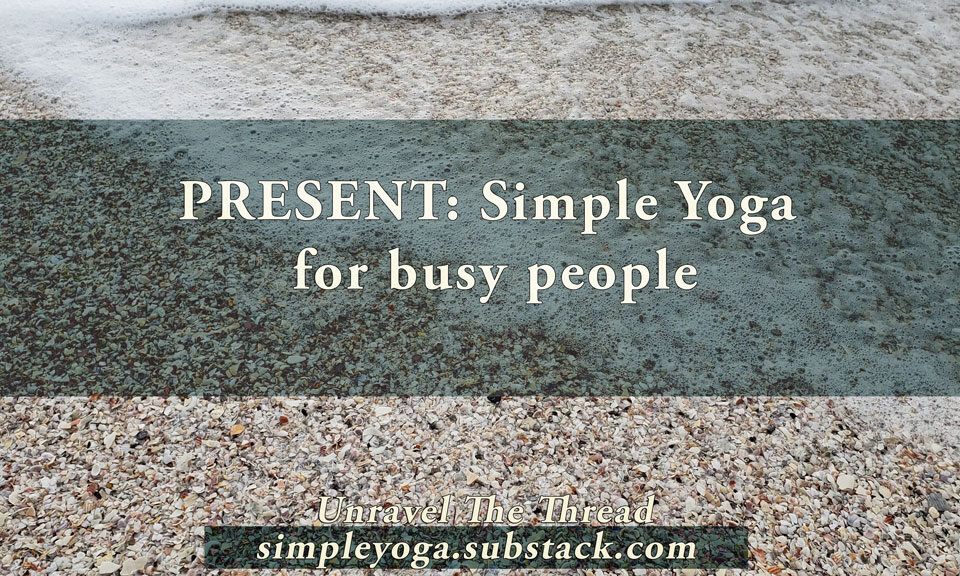
1.5 Know your Tendencies
March 31, 2019
1.7 Knowledge
April 14, 2019
1.5 Know your Tendencies
March 31, 2019
1.7 Knowledge
April 14, 20191.6 Knowledge, misperception, imagination, sleep and memory.


This verse lists the types of ways of being and the sutras that follow define each one of them. Ways of being are the patterns that develop consciously and unconsciously in posture, movement, breathing, thinking and feeling. Observing systematically these patterns can help uncover when some of them are helpful and when unhelpful. For instance, there are moments when it is quite useful to be detailed oriented, such as when you are following a specific set of instructions to assemble a piece of furniture or when proofreading an important message. At other times, like when you are thinking creatively or when you are trying to focus on the goal of a project, getting lost in the details may cause you to lose perspective.
These five categories, knowledge, misperception, imagination, deep dreamless sleep and memory classify our internal activities or ways of being. The simplest approach to this sutra is to reflect on each one of these words, its meaning and its influence on your thoughts, emotions, intentions and actions.
The first idea is knowledge. Living in a time with overwhelming amounts of information available about all kinds of topics, it is useful to contemplate the difference between knowledge and information. How do you know which one is which? How do you know what you know?
The second category is misperception. Misperception is the opposite of knowledge. What happens when you fail to understand something correctly? To explore this notion, we can ask ourselves: How do I know if what I think I know is true? The third way of being is imagination including anything you think that does not exist in reality. Start with the simple question: What do I think? Is what I think conducive to being present in my life? The fourth category of ways of being consists of dreams. What are my dreams? Are my dreams offering me insights and guidance or are they cryptic and confusing? Do my dreams generate calmness or agitation? The last category is memory. What do I store in my memory? Is my memory accurate? What are the effects of my memories on my thoughts, emotions, desires and choices?
Keep in mind that these five categories have been presented in the context of presence. Specifically, each one of these ways of being influences your ability to be present as well as the quality of your presence. The basic idea is to pay attention to your ways of being. Then, it is easier to notice the relationships between your posture, movements, breathing, thoughts and emotions, like when your posture influences your emotions, when your thoughts affect your breathing, or your emotions influence your posture. You can put this idea into practice by asking yourself: Is this posture useful? Is this way of moving helpful? Does this way of breathing contribute to the quality of my participation in this moment? Do these thoughts help me be present? Is this emotional attitude appropriate for this activity or for this interaction?
The questions intend to create a gap in the habitual mental, physical, emotional and respiratory activities to invite presence. The overarching goal is to enhance the quality of your experience. To assess the quality of your experience it is helpful to clarify your intention. Why am I doing this? And then corroborating that what you are doing is what you intend to do. By shining the light of awareness on what you are doing, you can make conscious decisions. In addition, these questions foster recognition that the input you perceive delivers useful feedback to help fine tune your participation in whatever you are doing. In the following verses Patañjali provides definitions of each one of these five ways of being.
As usual you can also chant this sutra to feel its vibrations directly in your whole being. In this case the traditional chant lists the five categories as individual words:
प्रमाण विपर्यय विकल्प निद्रा स्मृतयः ॥६॥
pramāṇa viparyaya vikalpa nidrā smṛtaya
- pramāṇa
- viparyaya
- vikalpa
- nidrā
- smṛtayaḥ
Unravel the thread is now available as a book!
If you find Simple-Yoga.org and Unravel the thread useful, consider supporting my labor with a donation, you may also donate using PayPal or Venmo. Thank you!
